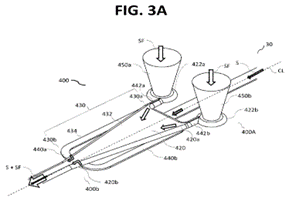The US Court of Appeals for the Federal Circuit reversed a claim construction that was adopted during an inter partes review (IPR) because the Patent Trial & Appeal Board erred in construing the contested limitation as limited to a single sample rather than including the possibility of plural samples. ABS Global, Inc. v. Cytonome/ST, LLC, Case No. 22-1761 (Fed. Cir. Oct. 19, 2023) (Reyna, Taranto, Stark, JJ.)
ABS and Genus plc (collectively, ABS) filed a petition to institute an IPR on a patent owned by Cytonome. The patent claims microfluidic devices for particle (e.g., cells, molecules and other particles of interest) processing. The claimed devices exploit the principles of laminar flow to hydrodynamically focus particles at a certain point along the flow path for inspection or other purposes. The claimed devices are capable of hydrodynamically focusing the flow of a particle-containing fluid (the sample fluid) by abutting the sample fluid on more than one side with a fluid that does not contain particles (the sheath fluid). Generally, the faster the sheath fluid flows relative to the sample fluid the more the sample fluid’s corresponding cross-section is compressed. Figure 3A of the patent is an example of how the claimed devices use sheath fluid (SF) to focus a sample fluid (S) along a channel (CL):

ABS’s petition argued that the challenged claims were anticipated or obvious at least in view of a prior publication that taught devices with a split sample stream. The Board disagreed, construing the challenged patent claims as directed to a single sample stream and concluding that ABS failed to demonstrate why those of ordinary skill—in view of the art cited in ABS’s petition—would have modified the prior art split sample stream into the claimed single sample stream. ABS appealed.
The Federal Circuit found that the Board erred in construing the challenged claims. In construing the independent claim as being limited to a single sample stream, the Board focused on two limitations: “an inlet configured to receive a sample stream” and “a fluid focusing region configured to focus the sample stream….” In limiting the claim to a single sample stream, the Board relied on the definite article preceding the second recitation of “sample stream” and noted that a plural-allowing interpretation would be inconsistent with a dependent claim that further requires the focusing fluid to be “introduced into the flow channel symmetrically with respect to a centerline of the sample stream.”
The Federal Circuit reversed the Board’s claim construction, concluding that the dependent claim was not inconsistent with a plural-streams interpretation for the independent claim and that the Board committed two errors in construing both claims. First, the Board did not properly apply what the Court refers to as the “general rule,” which is applicable to open-ended “comprising” claims that recite “a” or “an” before a noun. The Court explained that such a limitation should be construed to mean one or more unless context sufficiently indicates otherwise. Second, [...]
Continue Reading
read more

 Subscribe
Subscribe


